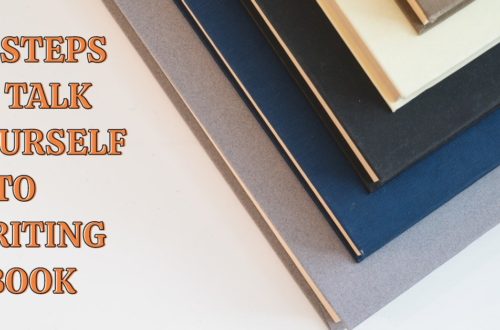
Chapter by Chapter Outline Template for Writing Engaging Novels
A novel can take anywhere from a few months to several years to finish depending on the author. For students and novice writers, the process is daunting and difficult to start. The length of a novel makes it necessary for authors to plan out their novel before sitting down and writing it.
Outlining a novel helps the author think through what parts of the story should be included and what parts need more attention. It can also help authors plan out any subplots. A good outline for any novel helps the author plan out the entire novel and helps the author make sure they don’t miss any key points. Outlines can help reduce writer’s block. It can also help the writer to know what characters are needed next.
Outlining a novel can be immensely helpful for many reasons. For one, it can help you plan and organize your story before getting into the meat of the narrative. Additionally, outlining can help you to plan out conversations and scenes without having to think too hard about all the details such as what should happen at this point in time and who will say what.
An outline is usually created before the first draft of a novel. It can help writers to plan out their plot and characters. The three major benefits of outlining a novel are the ability to have a clear view of your plot, being sure you have some sort of plan and having an idea of what you want to get out of your story. A plot outline gives you the chance to get a clear view of what is going on in your novel and not get lost in the details. This way you will know how everything ties together and can make sure that everything has been thought about. Having a clear view of your novel will also make it easier to know whether or not you have enough time to write it.
Chapter by chapter outlines are one of the most popular ways to create an outline for a novel. This is because chapters are easier to digest than reading all hundred pages of a rough draft. However, some writers prefer to outline their book by making notes on index cards or on pieces of paper so they can rearrange them as they go along.
The process for outlining a novel is different for every writer, but it’s always important that you have one before you start drafting your story.
This guide is intended for writers who want to create an engaging novel. This chapter by chapter outline template will help writers decide what should be included in the novel, which chapters should follow other chapters, and how to make the novel coherent:
Chapter One:
The Introduction: This is where you will introduce your character, begin creating a world where your character lives, and begin their backstory.
Chapter Two:
The Inciting Event: This is a pivotal moment in any story where you find out what’s changing the status quo and why. However, this isn’t just for romance novels! For example, suppose your protagonist finds himself or herself involved with some sort of conflict resolution (such as solving crimes). In that case, this could be an essential point during their journey to kick off onto victory road towards success.
Chapter Three:
The Mini-Obstacle: A mini-obstacle is a hurdle that stops our characters from working toward their goal. These can be anything, like personal problems or distractions at work; it just has to be something small enough, so they’re not able to reach the finish line yet!
Chapter Four:
The Mini-Resolution: With a mini-resolution, our character doesn’t necessarily win but is satisfied for now. The character’s life isn’t resolved, but they have a moment of satisfaction.
Depending on the length of the novel, continue the pattern of mini-obstacle and mini-resolution. Do this as many times as you need to for as many chapters as you need. For example, in a romance novel, this timeframe is where they would fall in love.
Chapter Five:
Lead up to the climax/black moment: This is where things start to go wrong.
Chapter Six:
The Climax/Black Moment: The climax is often the black moment of a story. It’s when all hope for a relationship/resolution seems lost and those conflicts they’ve been struggling with since the beginning come to a head, bringing everything full circle in an unforgettable scene!
Chapter Seven:
If the novel is romance, this is the “miserable and alone” chapter. If it’s not, this could be the “I’ll never make it” or the “I’m not good enough” moment. Everything looks bleak.
Chapter Eight:
Things are on the rise. The protagonist finds the will to carry on. Our love birds discover they can’t live without each other. It’s time for compromise and sacrifice. Compromise and sacrifice will lead us to the finish line!
Chapter Nine:
The resolution. The protagonist wins! The lovers get back together! Everything is as it should be, and the reader is relieved that everything turned out okay.
Epilogue:
Give a glimpse into the future and what it holds for the characters. What happened after the victory? Is the world finally at peace? Have the lovers gotten married? Then, wrap it up like a gift for your reader. (Note: If your novel ends in a cliffhanger, you can omit the epilogue and use a mini-resolution or a happy-for-now to build up that cliffhanger ending for the next book.)
A few more tips:
- Since no two authors have the same chapter lengths, A helpful way to find the perfect balance between a book’s overall length and chapter lengths would be by looking at how long each section should take up. For example, the lead-up or introduction should last one-third of your chapters, while other significant events in your story could have equal spaces allocated towards them as well, so they don’t grow disproportionately longer than other parts throughout the reading time.
- When repeating the mini-obstacle/mini-resolution pattern, it’s expected that the challenges start small and grow larger throughout the book. This is where your character is forced to grow while we cheer them on.
We hope this chapter-by-chapter outline was helpful to you. Do you have any tips for writing an outline? Let us know in the comments below.




